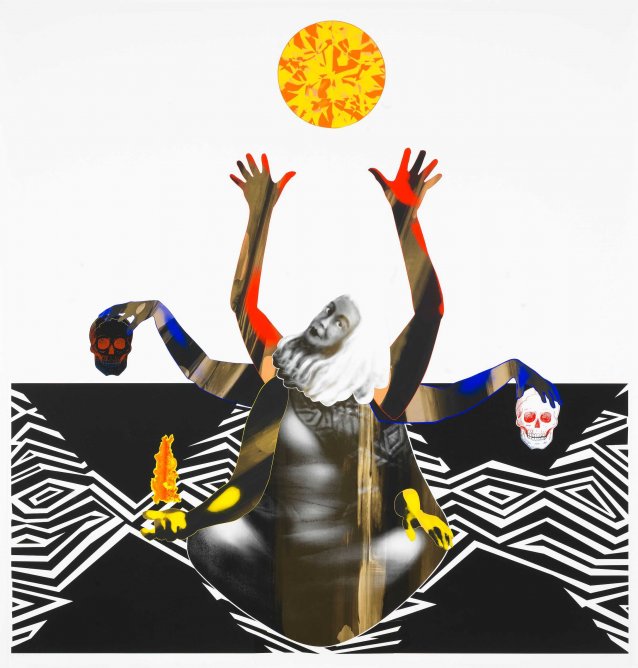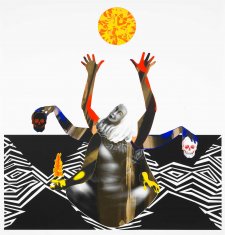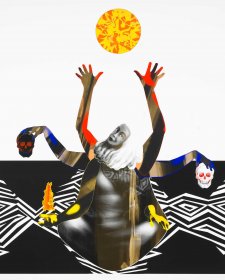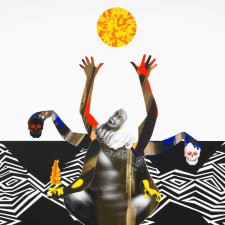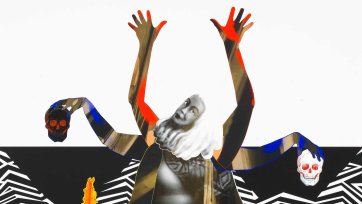Read
Marcia Langton by Brook Andrew is a signature work in the collection of the National Portrait Gallery. The multi-armed form is central to the force of this portrait, a device that has been used to different effect by artists in assorted times and places. While reasons for its use vary, the desire to convey a consciousness in flux is a common one. In the case of Marcia Langton, the mutable experience of being human is given intricate form in what Langton herself describes as a ‘meta-statement’. Each of its elements and symbols richly and singularly meaningful, the work is configured to elicit momentum, a life in flow. At once it transmits its distinctive dynamism, while powerfully deconstructing expectations of stasis that have characterised portraits of Aboriginal peoples.
Read the Portrait article The Art of Multiplicity by Meredith Hughes.
Solo Activity
The complex layering of different elements in this portrait of Marcia Langton allows for multiple readings and deeper understanding of her as a whole person. This activity builds on the idea of using symbolism in portraiture.
You will need: a range of materials with which to draw, collage or paint
- Taking inspiration from the richly layered portrait of Marcia Langton, create a portrait of yourself without representing your physical features.
- Draw/collage/paint five or six elements that represent you. You may wish to emulate the techniques Brook Andrew used in cutting elements out of painted paper and arranging them in relation to one another. Think about what different materials and forms might suggest.
- Think about other ways that you can represent aspects of your personality, history, culture and interests. Each element of your portrait can be used to represent your interests, values, experiences or opinions in a variety of ways.
Connected activity
Now let’s see how you can use symbolism to create a convincing portrait of someone else.
You will need: a range of materials with which to draw, collage or paint
- Similar to the activity above, create a portrait of another person using a range of symbols, materials and forms.
- Take a photo of your portrait and send it to a friend or family member. See if they can identify who you have represented in your portrait.
